A European with Asian heritage growing up in a collector family, Olivier Chow is particularly drawn to African contemporary art and design. His experiences in humanitarian affairs have brought him new perspectives and insights and led him to do a PhD at the School of Oriental and African Studies in London on the aesthetics of cruelty.
Olivier shared with LARRY’S LIST about how a humanitarian crisis he had witnessed made him finally understand Picasso’s Guernica. He also talked about an African designer’s post-apocalyptic poetry and magic related to urban recycling; what “happy pills” he has through contemporary African art and design; how buying art online can be like online dating; and some emerging African artists and designers to follow.
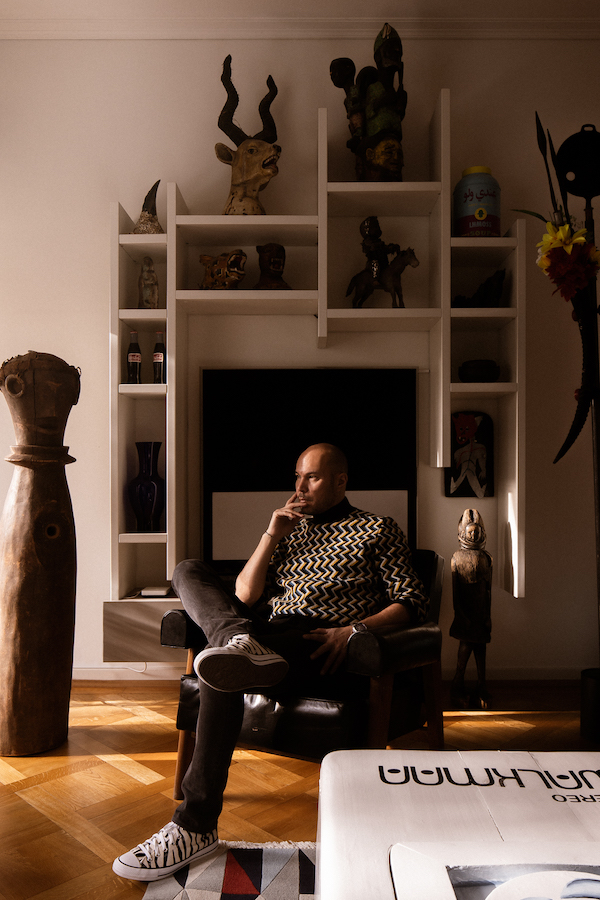
Collecting
What made you want to start collecting art? What is the main motivation behind your collecting?
I was fortunate to grow up in a family of collectors, so I was exposed to it from a young age. Early on I had my own taste which was different from the classical and refined taste of my grandfather (Edward T Chow). My taste was more “visceral”: I had an immediate aesthetic affinity with tribal power objects and with modern art, in particular surrealism. I started collecting traditional African art when I was working in Central Africa, then studied African Arts and Critical Theory at the School of Oriental and African Studies (SOAS) in London. Later, I transitioned towards contemporary African art. I like blending traditional and contemporary. Collecting for me is a way of creating my own world — it’s not just about the artworks but also the encounters and friendships behind those works. I also have many memorabilia from my previous life on the field, working in humanitarian affairs as a delegate for the International Committee of the Red Cross (ICRC). I live like a survivor surrounded by the remnants and memories from my previous lives.
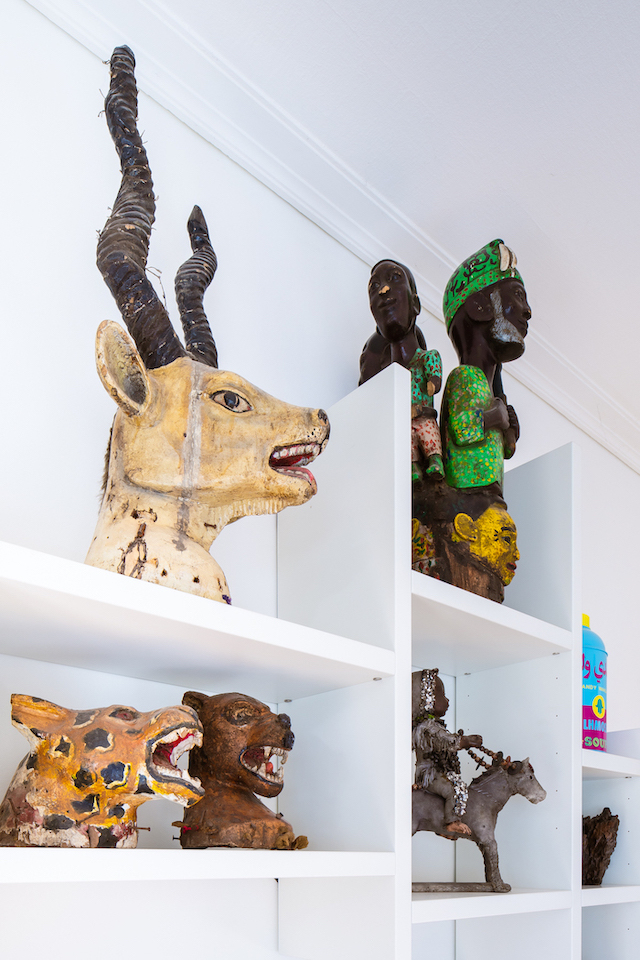
When did you fall in love with a piece of art? What was it?
One of my early art memories was seeing Picasso’s Guernica in New York. I was about 10 years old, but it had an incredible effect on me. It was so massive and powerful — crushing really — the horrors of war, the fragility of humankind, splendidly brought to life. The painting seemed to announce something, but I couldn’t quite figure what exactly. It took me twenty years to understand this painting. In 2001, I negotiated for a humanitarian cease-fire between the UCK rebels in North Macedonia and the North-Macedonian government. After ten days of shelling, we crossed into no-man’s land to reach the ethnic-Albanian villages. There was this strange noise in the background. All the horses had gone mad from the shelling and were running all over the place. One of them dropped dead right in front of me. That’s when I finally understood Guernica.
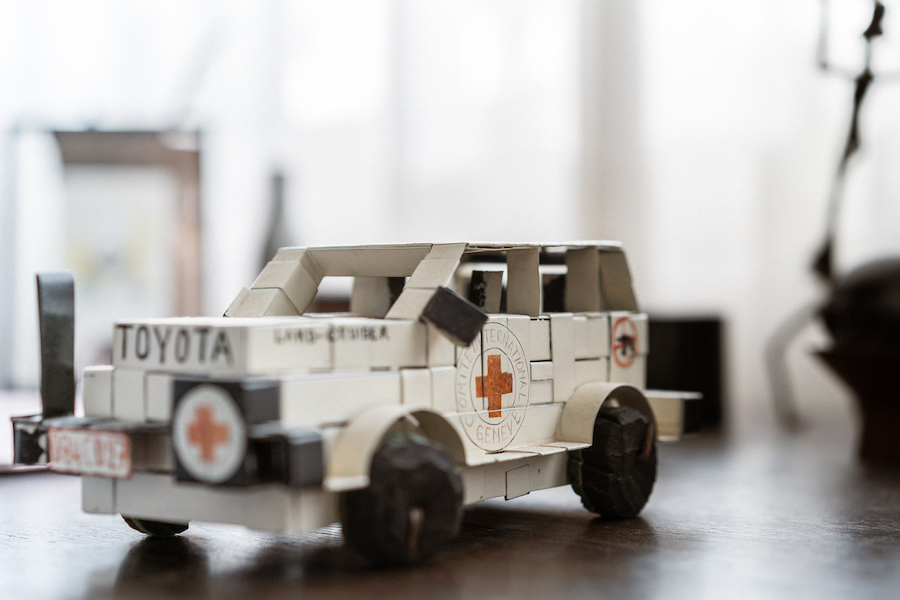
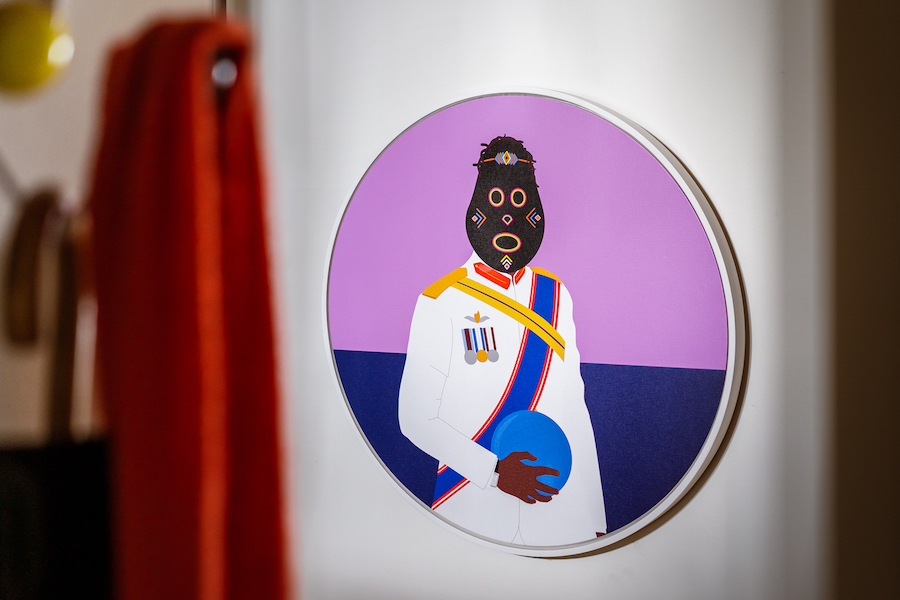
Why are you particularly interested in African contemporary artists and designers?
In 1999, I was sent by the ICRC to Eastern Democratic Republic of the Congo (DRC) during the Second Congo War. I was stationed in Goma with the rebels. I fell in love with the DRC and with the Congolese, impressed by their resilience and incredible sense of humor. In 2009, when I was living in Cape Town, I got acquainted with the contemporary art and design scene over there. In Africa, I found another perspective on the world, new insights which completed and challenged my own — as a European with Asian heritage — a point of view liberated from Western canons or toying with them, usually with fascinating results like in the work of Wole Lagunju or Dennis Osadebe, two artists I am particularly fond of. In terms of design, I love how African designers, like Hamed Ouattara for example, use available material, such as oil drums, to make incredible things with this beautiful patina. There is a kind of post-apocalyptic poetry and magic related to urban recycling.
How have your experiences in humanitarian affairs influenced your perception of art?
I’m a specialist in torture, having worked for many years in detention settings around the world protecting POWs, captured combatants, political and security prisoners and also migrants held in retention centers. This experience gave me direct insights into how war translates onto the human body and mind: torture, rape, pain, trauma, loss, mourning but also resilience and survival. I was fortunate to work with both the survivors and the perpetrators, so I know firsthand the extremes of humankind, beyond the usual clichés. I then pursued this from an academic and aesthetic standpoint by doing a PhD at SOAS on the aesthetics of cruelty. I am also myself a survivor of an attack in Haiti in 2013. As a result of both my experience and studies, I am highly critical of artworks which deal with the subject matter and representation of war, violence, pain, and suffering, as they often fall into traps such as traditional dichotomies of good and evil, or the easy representation of suffering which do not really help understand the complex dynamics at play. Some artists like Alfredo Jaar do manage to work around those very complex realities at the boundary of human experience. His installations, for example, are extremely intelligent, putting the human experience of war or genocide at the center but without exposing the wounds and the horrors, focusing on the absence and loss, the failure of representation — it is of course much more powerful.
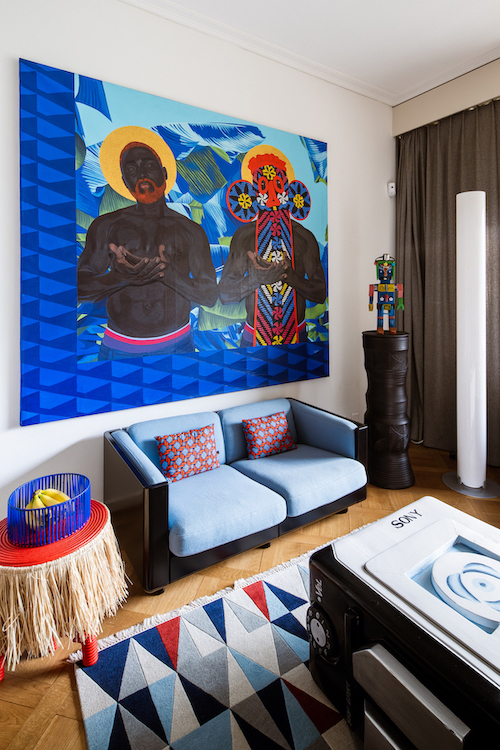
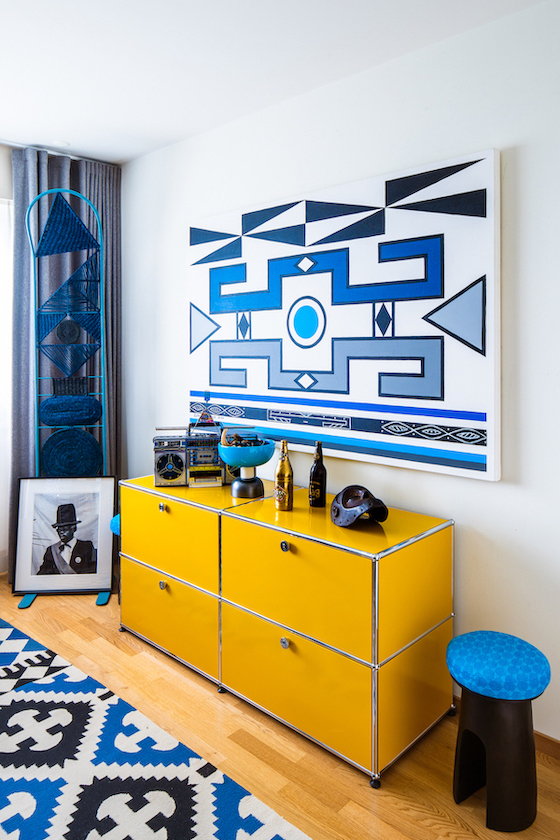
What is the theme that unites all the works you have acquired?
There are several themes within my collection. First the objects and memorabilia from the field, which remind me of the many places I have lived. Collecting experience – especially foreign and unique experience – is central to my life: this theme is presented as a kind of curiosity cabinet and collage. Then, there is the current focus of my art collecting which is oriented towards contemporary African art and design, in particular neo-pop afro-futurism. It’s beautiful, fun, playful, and colourful – happy pills for the eyes and the mind! We really need this now.
What were the first and the latest artworks you purchased?
One of the first important artworks I bought was a painting by Aboudia. I discovered him at the Pangaea exhibition at the Saatchi Gallery, his early work was about the fighting in Abidjan and it spoke to me immediately on several levels. The work I bought was less dark and happier, it brought the vibrant energy of the African metropolis right into my living room. Recently, I bought an artwork by Youssef Nabil, a beautiful picture of two men in an intimate and tender embrace in his signature retro aesthetic, titled Not Afraid to Love. There is something moving about it, so precious and fragile — there is still a very strong opposition to LGBT life in many African countries, and people are forced to hide. Not Afraid to Love beautifully captures an intimate and hidden moment away from the world.
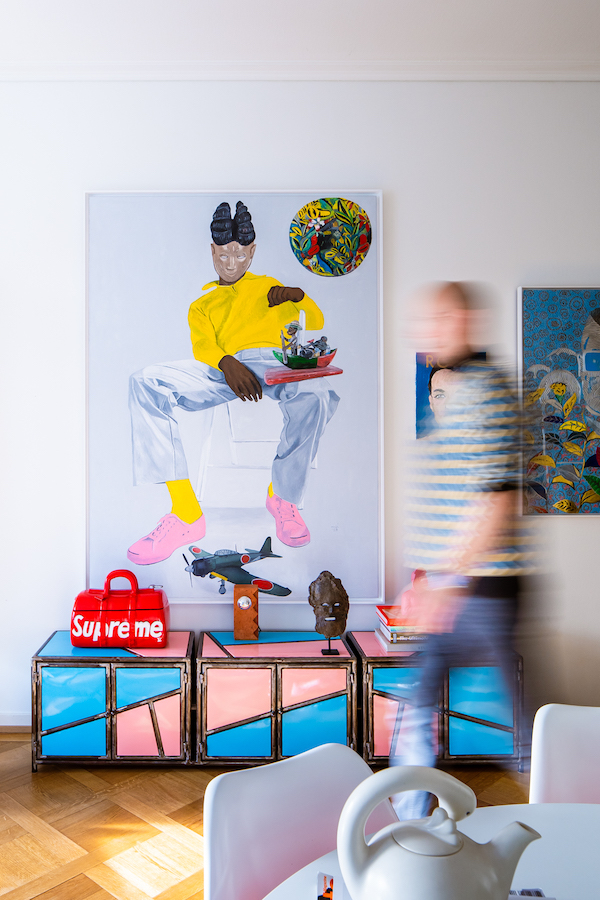
How many artworks do you own? Where do you display your collection?
Around 50. The works are mainly displayed at home, but some are also on show at my art gallery, Foreign Agent, which is located 300 meters from my home in Lausanne.
Have you ever presented/ Would you wish to present your art collection publicly?
Some of my artworks are on show at the gallery but are not for sale. These are the pieces everyone wants! I have a statue by John Goba titled Hairy Woman, which has become the guardian figure of the gallery, like a mascot. Everyone loves it because it’s beautiful, powerful, otherworldly, and funny, all at the same time. For the rest, it will stay private for now because it’s personal and intimate – just for family and friends, and Larry’s List!
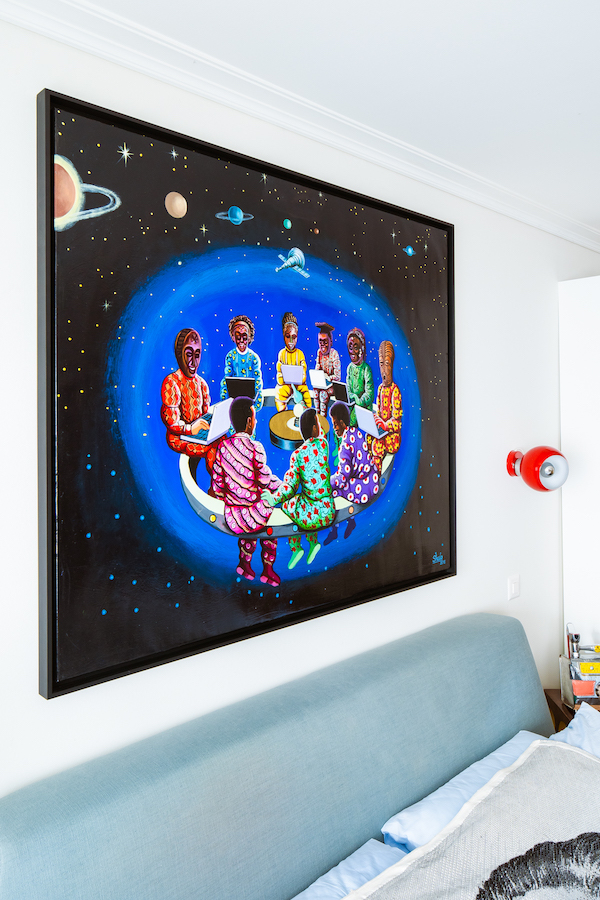
What considerations guide you to make a purchase?
Instinct is one consideration: an artwork needs to appeal to you on several levels. There has to be a connection. I don’t buy to invest. While I am comfortable buying online, I have learnt to ask for several photos and close-ups. It’s like online dating, you can’t base yourself on one single picture. Then, of course, there is the price and the budget. Every purchase has to be carefully reviewed.
How important is it for you to meet the artists who created the artwork?
One of my favorite art-related activities is meeting the artists, whether I work with them or not: to visit their studio and see their latest productions, understand their process, see how they live. It’s always a privilege to enter the sphere of the artist. I’m very curious by nature. Developing a relationship with the artist and understanding their work is paramount. And it always takes time. When you know the artist, you are more tempted to buy something from them, as if just to have something to take with you from that special encounter.
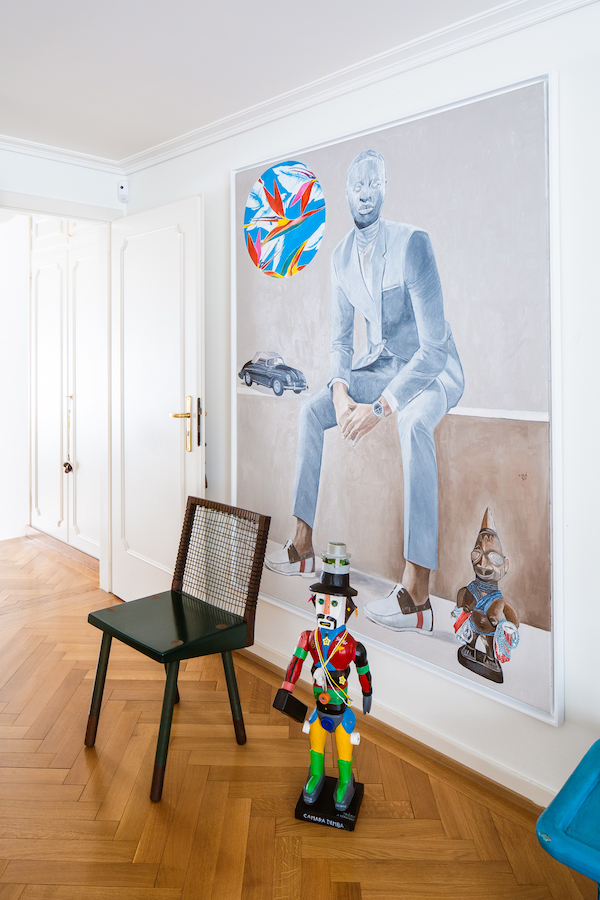
African contemporary art and design
Which is your favourite art fair? And why?
Just before the first lockdown, I went to 1:54 in Marrakech which is located in the Mamounia, one of these very chic luxury historical hotels, a kind of old-world bubble. The fair was small, intimate, elegant, quiet and not too crowded. You could really take everything in, which is impossible at big art fairs. After the fair, you could go for a coffee or a beer in the gardens. I didn’t want to leave. In my mind, I’m still there!
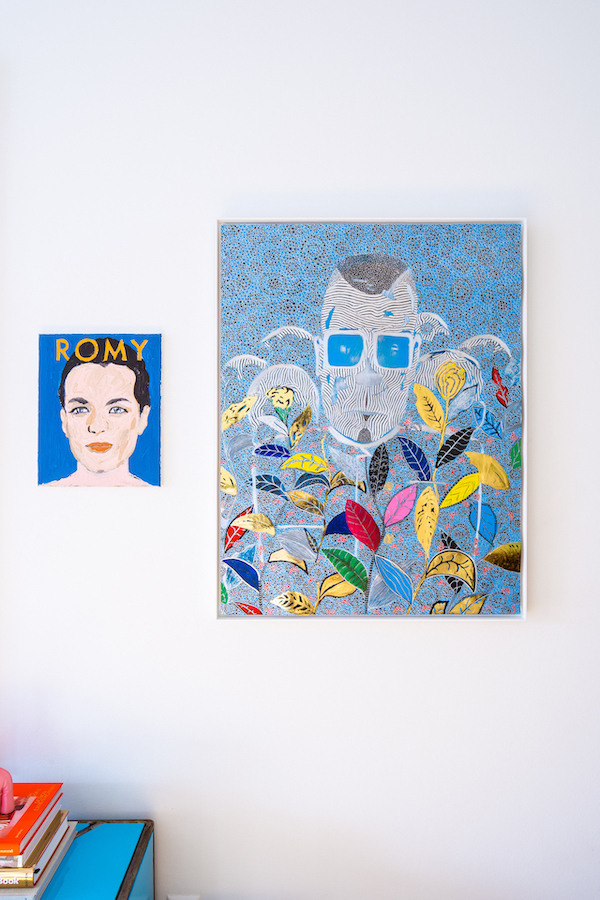
What are your visions for the African contemporary art market in the upcoming years?
It’s a dynamic and exciting market. There is no shortage of talent in Africa, and everyday new incredible artists seem to appear out of nowhere. It’s almost impossible to follow because of the sheer number of new institutions, hotspots, art schools, residencies, and galleries popping up all over the place. Africa is also increasingly consolidating its status as an art destination: Cape Town, Marrakech, Dakar, Accra and many others for the more adventurous. The market is constantly expanding as many people are still slowly discovering African contemporary art, as is the case in Switzerland for example. In the future, African contemporary art will go even more global – towards China as well. Perceptions towards Africa as a continent are changing fast everywhere from old-fashioned negative tropes to positive notions centered around entrepreneurship, youth, art, music, fashion, etc. Many artists from Africa are slowly being integrated within the global economy of the contemporary art market. Diversity is a global trend. One day it won’t really matter where you’re from.
Can you name three emerging African artists and three designers we should watch out for?
Maurice Mboa is an artist from Cameroon based in Geneva. His work is incredible, alive with actual magic and collapses differences between painting and sculpture. He kind of reminds me of an African Klimt.
Didier Viodé is an artist from Benin based in France. His portraits, inspired by Instagram and the Renaissance, are complex and melancholic. He also paints legs and sneakers! I’m a sneaker addict!
Tiffanie Delune is a fascinating artist of Belgo-Congolese origin. Her work is vibrant and expressive, celebrating nature as well as her personal journey. Another world.
Hamed Ouattara is a designer from Burkina Faso. He works from recycled oil drums, his productions capture the urban renaissance of African cities and the beauty of the Sahel.
Jean-Servais Somian is a designer from the Ivory Coast. His colorful productions are made of wood, mainly from coconut trees or from plastic buckets. They are contemporary, playful and pop and will brighten up your interiors.
Ousmane Mbaye is a designer from Dakar, Senegal. He works with recycled metal. His Graphik collection is a classic: extremely elegant and contemporary, with clear lines and beautiful proportions.
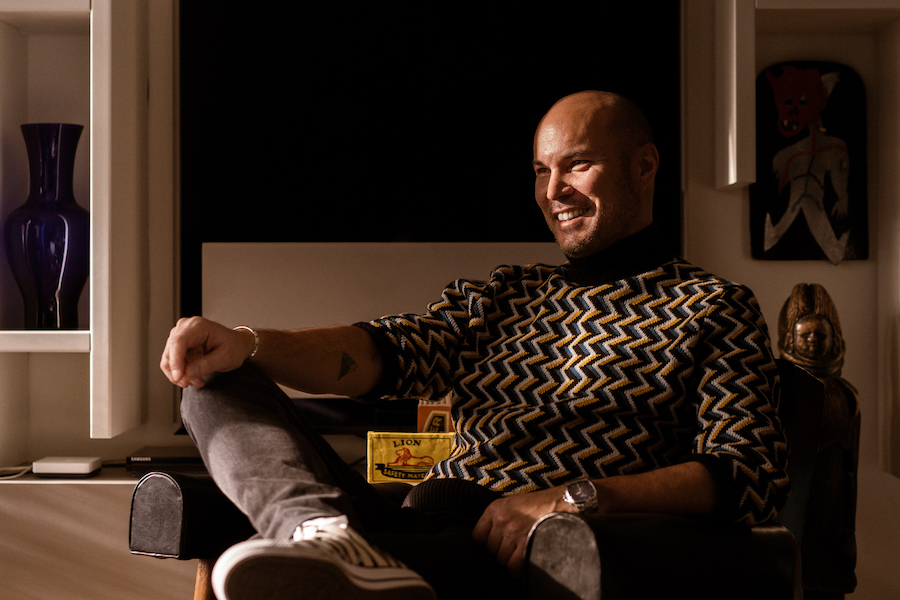
The Art World
What was your happiest moment being involved in art?
Sometimes you really have to persevere to be able to acquire an artwork by a specific artist. This happened to me with the work of Zimbabwean artist Wallen Mapondera. I went to his solo show at SMAC Gallery in Rosebank, Johannesburg, three times, which seldom happens to me. I wanted the main work on display, which was initially available, but then wasn’t for some reason; and by then, the other works I was interested in were no longer available. I was finally able to buy a beautiful artwork at his next show. It was really special for me.
Who inspires you the most in the art world?
One of the persons I find inspiring is Touria El Glaoui. She’s the Moroccan entrepreneur who set up the 1:54 art fair dedicated to African contemporary art, which has become a reference in the business. She has managed to create a platform which gives visibility to many African artists who might otherwise struggle to get this kind of attention or recognition. I also like her 1:54 pop-ups at Christie’s – a smart way to stay flexible within the current environment and make things more fun. I admire pragmatic people who are able to think and develop a strong vision with a purpose and then materialize it.
What are you especially excited about in regard to art in 2021?
I think that 2021 will be back to basics. I look forward to enjoying the simple art life like seeing artworks in reality rather than virtually, or travelling for a show, an art fair, a new art scene while being able to go out to a nice restaurant afterwards! I really hope that I’ll be able to travel in 2021. I would like to return to South Africa or to discover the art scene in Accra or Lagos. There is so much to discover.
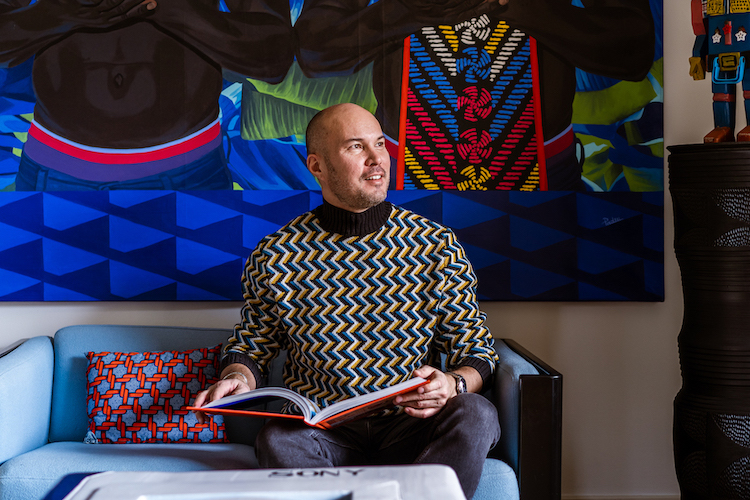
A selection of artists Olivier collects:
Aboudia
Dennis Osadebe
Didier Viodé
Wole Lagunju
Youssef Nabil
By Ricko Leung





